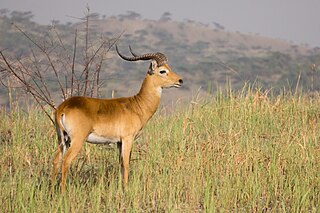
Zakouma National Park is a 1,158-square-mile (3,000 km2) national park in southeastern Chad's Salamat Region. Zakouma is the nation's oldest national park, declared a national park in 1963 by presidential decree, giving it the highest form of protection available under the nation's laws. It has been managed by the nonprofit conservation organization African Parks since 2010 in partnership with Chad's government.

Waza National Park is a national park in the Department of Logone-et-Chari, in Far North Region, Cameroon. It was founded in 1934 as a hunting reserve, and covers a total of 1,700 square kilometres (660 sq mi). Waza achieved national park status in 1968, and became a UNESCO biosphere reserve in 1979.

Dja Faunal Reserve, located in south eastern Cameroon, is a UNESCO World Heritage Site inscribed in 1987. Causes of inscription include diversity of species present in the park, the presence of five threatened species of mammal, and lack of disturbance within the park. It is managed by Dja Conservation Services (DCS), which is led by a conservator. The Reserve receives significant support for its management from many projects funded by international partners and supporters of conservation in Cameroon.
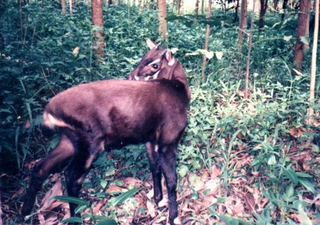
The wildlife of Vietnam is rich in flora and fauna as reflected by its unique biodiversity. Rare and endemic antelope-like animal, categorized under the bovine subfamily, was found in 1992, in Bạch Mã National Park. In the 1990s, three other large mammal species, the deer-like Truong Son muntjac, giant muntjac and Pu Hoat muntjac, were also discovered, the first two in the same park. Conservation protection and scientific studies of the ecology of Vietnam, particularly in the protected forest areas, have been given priority attention by the Government of Vietnam. Laws were enacted to set up Xuân Thủy Wetland National Park, four UNESCO Biosphere Reserves, and Hạ Long Bay and Phong Nha-Kẻ Bàng National Parks; the last two are also designated as UNESCO World Heritage Sites.
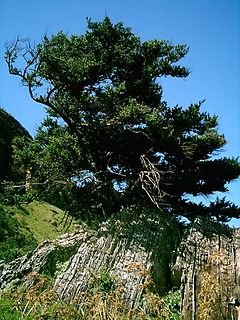
The wildlife of Cameroon is composed of its flora and fauna. Bordering Nigeria, it is considered one of the wettest parts of Africa and records Africa's second highest concentration of biodiversity. To preserve its wildlife, Cameroon has more than 20 protected reserves comprising national parks, zoos, forest reserves and sanctuaries. The protected areas were first created in the northern region under the colonial administration in 1932; the first two reserves established were Mozogo Gokoro Reserve and the Bénoué Reserve, which was followed by the Waza Reserve on 24 March 1934. The coverage of reserves was initially about 4 percent of the country's area, rising to 12 percent; the administration proposes to cover 30 percent of the land area.

The wildlife of Chad is composed of its flora and fauna. Animal and plant life correspond to the three climatic zones. In the Saharan region, the only flora is the date-palm groves of the oasis. Palms and acacia trees grow in the Sahelian region. The southern, or Sudanic, zone consists of broad grasslands or prairies suitable for grazing. As of 2002, there were at least 134 species of mammals, 532 species of birds, and over 1,600 species of plants throughout the country.

The wildlife of Niger is composed of its flora and fauna. The wildlife protected areas in the country total about 8.5 million hectares, which is 6.6% of the land area of the country, a figure which is expected to eventually reach the 11% percent target fixed by the IUCN with addition of more areas under the reserve category. The dama gazelle has become a national symbol. Under the Hausa name meyna or ménas the dama appears on the badge of the Niger national football team, who are popularly called the Ménas.
The wildlife of Mali, composed of its flora and fauna, is widely varying from the Saharan desert zone to the Sahelian east–west zone, to Mali, a landlocked francophone country in North Africa; large swathes of Mali remain unpopulated but has three sub-equal vegetation zones; the country has Sahara Desert in the north, the Niger River Basin at its center and the Senegal River on the south.
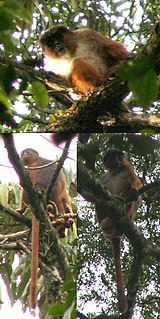
Many protected areas in Cameroon are still in pristine condition, mostly because there is less tourism in Cameroon than other regions of Africa. According to reported statistics, there were ten protected areas from 1932 to 1960. Six protected areas were added between 1960 and 1980, five more were added between 1980 and 2004, and eight protected areas are under consideration within a final approval process.
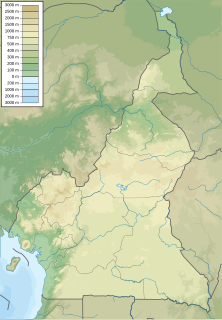
Bouba Njida National Park is a national park of Cameroon. A total of 23 antelope species occur in the park. The painted hunting dog, Lycaon pictus, had been observed in Bouba Njida National Park at the start of the 21st century. This population of the endangered canid is one of the few that remained in Cameroon as of the year 2000.

Campo Ma'an National Park is a 264,064 hectare national park of Cameroon. The combined area for the national park and the buffer zone surrounding the park is approximately 700,000 hectares.

Lobéké National Park is a national park of southeastern Cameroon within the Moloundou Arrondissement of East Province. Located in the Congo Basin, it is bounded on the east by the Sangha River which serves as Cameroon's international border with Central African Republic and the Republic of the Congo. It is adjacent to two other reserves in the CAR and Congo. To the northwest is Boumba Bek National Park, another national park in Cameroon's East Province.
The Mbam Djerem National Park is found in Cameroon. It was established in 2000 and covers 4234.78 km².
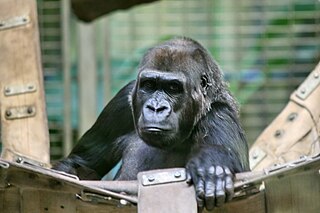
Wildlife in the Central African Republic is in the vast natural habitat located between the Congo Basin's rain forests and large savannas, where the human density was smaller than 0.5 per km2 prior to 1850. The forest area of 22.755 million has, considered as one of the richest storehouses of wild life spread over national parks, hunting reserves and community hunting areas, underwent a change over to an alarming situation of loss of wild life due to greed for ivory and bushmeat exploitation by the hunters, mostly Arab slavers from across the borders of the Central African Republic with Chad and Sudan.

Many areas of Vietnam are under protection. While the national reserves cover small areas of scientific significance with restricted access, the national parks also cover wetlands of Ramsar designated areas and BirdLife International inscribed bird areas. The largest of the national parks initially covered were the Cúc Phương National Park, the Cát Tiên National Park, and the Côn Đảo National Park which to start with were forest areas cum reserves or prohibited areas. The objective for creating national parks was to allow access to the reserved areas as a part of ecotourism and cultural needs with full attention to the basic approach of conservation of natural environmental resources.
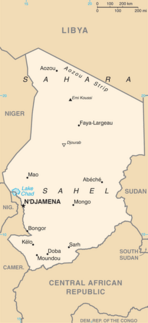
Elephant hunting or elephant poaching and exploitation of the ivory trade are illegal in Chad and pose a major threat to elephant populations. The profitable ivory industry is also a threat to the lives of rangers, even in the national parks, such as Zakouma National Park, the worst-affected area.

The Binder-Léré Faunal Reserve, in south-west Chad, bordering Cameroon, was established in 1974 covering an area of 1,350 kilometres (838.85 mi). It has been designated as a Ramsar site since 2005.
The Siniaka-Minia Faunal Reserve was established as an IUCN Category IV area in 1965 covering an area of 4,260 km2 (1,640 sq mi), due its importance for preserving black rhinoceros.

The Sambisa Forest is a forest in Borno State, northeast Nigeria. It is in the southwestern part of Chad Basin National Park, about 60 kilometres (37 mi) southeast of Maiduguri, the capital of Borno State.


